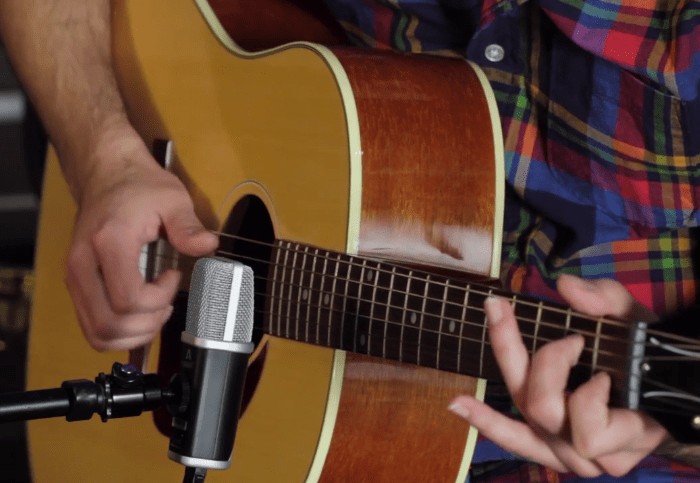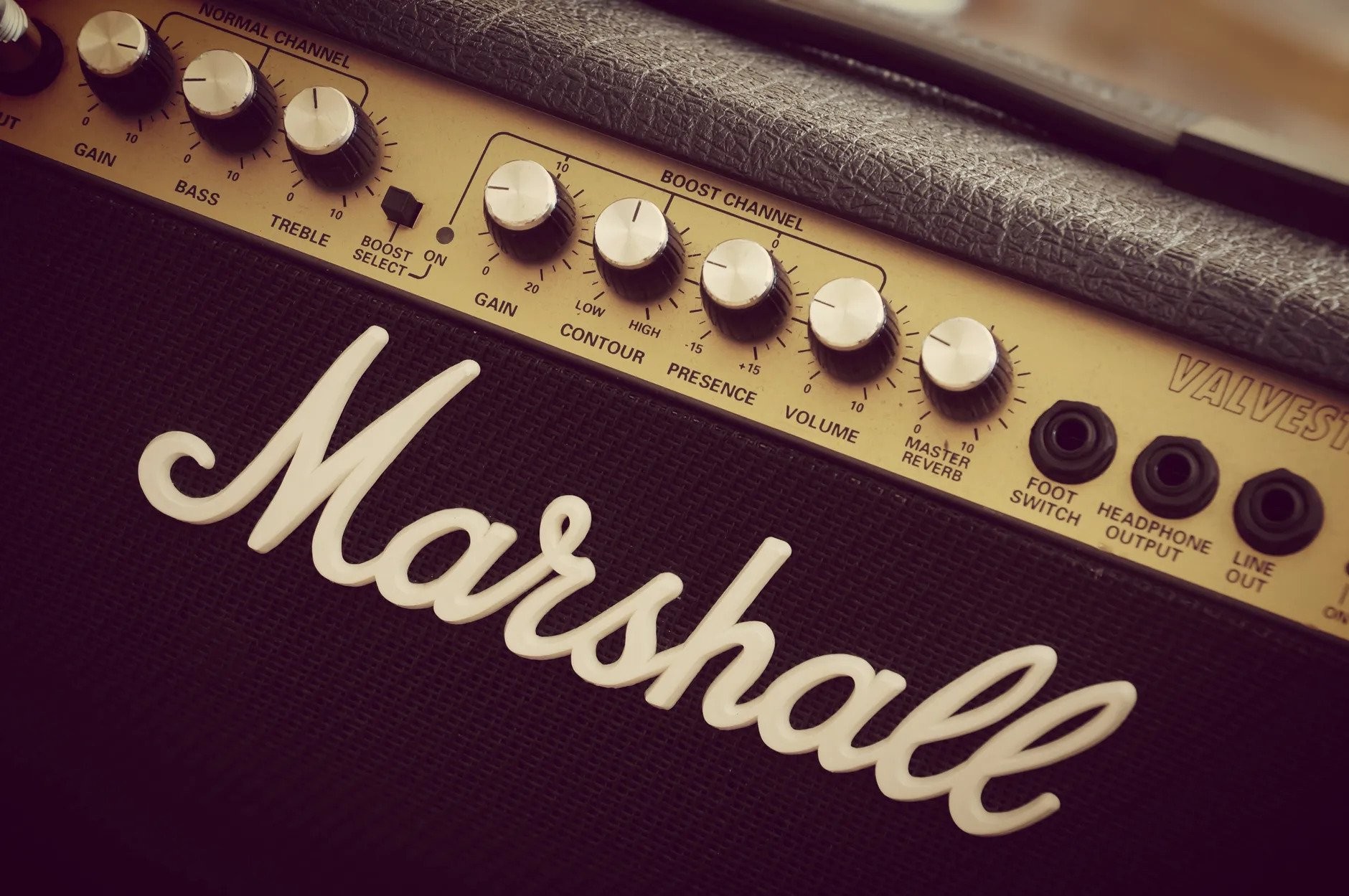Are you wondering if you need to learn acoustic guitar playing before diving into the world of electric guitar? This is a common question for beginners, and at LEARNS.EDU.VN, we’re here to guide you toward the best path for your musical journey. Understanding the nuances of both acoustic and electric guitars will empower you to make an informed decision and start playing the music you love and to improve your musical instrument techniques. Explore guitar fundamentals and musical instrument learning on our website.
1. Debunking Common Myths About Learning Guitar
Many misconceptions surround the “right” way to begin your guitar journey. Let’s address some of the most common myths:
1.1. Myth: Acoustic Guitar First is Mandatory
The idea that you must learn acoustic guitar before electric is a widespread belief. The logic often goes: acoustic guitars require more finger strength and a more precise technique, so mastering them first will make playing electric guitar easier. While there’s some truth to this, it’s not a universal rule.
I, myself, started with electric guitar. The transition to acoustic later on involved minor adjustments: a bit more pressure on the strings and adapting to a slightly wider neck. However, the core techniques, chord shapes, and musical concepts were directly transferable. Both instruments can be mastered, so your starting point shouldn’t be dictated by a rigid “acoustic first” rule. The best starting point is whatever inspires you most!
1.2. Myth: Electric Guitar Requires an Immediate Amplifier Purchase
While having an amplifier unlocks the full potential of an electric guitar, it’s not a mandatory first purchase. A common worry for beginners is that an electric guitar will be inaudible without an amp. This isn’t true. Unplugged, an electric guitar produces sound, albeit quieter than an acoustic.
You can practice and learn basic chords and techniques without an amp. Think of it as silent practice – perfect for when you don’t want to disturb others. An amplifier can always be added later when your budget allows. If an electric guitar is what motivates you to play, don’t let the perceived need for an immediate amp purchase hold you back.
1.3. Myth: Classical Guitar is the Best Starting Point for Everyone
Classical guitars have nylon strings, which are easier on the fingers than the steel strings of acoustic or electric guitars. However, the wider neck and specific playing style of classical guitar make it ideal only if you are interested in learning classical or flamenco music.
If your goal is to play popular songs on the radio, an electric or steel-string acoustic guitar will be a better fit. While classical guitar can build finger strength, it’s not a necessary prerequisite for other styles. Choose the instrument that aligns with your musical aspirations.
2. Identifying Your Guitar Inspiration
The most important factor in choosing your first guitar is your musical inspiration. Which guitarists and genres resonate with you the most?
-
Electric Guitar Inspirations: If you dream of emulating rock legends like Slash, blues masters like B.B. King, or innovative players like Jimi Hendrix, an electric guitar is the obvious choice. The feel, sound, and possibilities of an electric guitar will fuel your motivation.
-
Acoustic Guitar Inspirations: If you’re drawn to singer-songwriters like Ed Sheeran, folk artists like Bob Dylan, or country stars like Taylor Swift, an acoustic guitar will likely be more appealing. The portability and intimate sound of an acoustic guitar are perfect for these styles.
Consider the artists and genres that inspire you the most. Let that inspiration guide your choice.
3. Acoustic vs. Electric: A Detailed Comparison
Still undecided? Let’s delve into the pros and cons of learning on each type of guitar:
3.1. Learning on Electric Guitar: Advantages and Disadvantages
| Feature | Pros | Cons |
|---|---|---|
| String Tension | Lighter strings make it easier to press down, reducing finger fatigue and making it easier for beginners. | Requires a different technique adjustment for acoustic guitar. |
| Playability | Easier to learn techniques like string bending, tapping, and sweep picking, common in rock and metal. | Some techniques are more difficult to execute on an acoustic guitar. |
| Versatility | Wide range of sounds possible through amplifiers and effects pedals, opening up endless sonic possibilities. | Requires investment in additional equipment (amplifier, cables, effects pedals). |
| Band Compatibility | More commonly used in bands across various genres. | May not be the best choice for solo acoustic performances or genres like folk or classical. |
| Weight | Despite the smaller body, electric guitars can sometimes be heavier than acoustic guitars, depending on the wood and hardware used. | Can be uncomfortable for some players, especially beginners who are not used to holding a guitar for extended periods of time. |




3.2. Learning on Acoustic Guitar: Advantages and Disadvantages
| Feature | Pros | Cons |
|---|---|---|
| Transition | Learning on acoustic first can make the transition to electric guitar smoother (due to the higher string tension requiring more finger strength), but it’s not essential. | Can be discouraging for beginners due to the higher string tension and wider neck. |
| Portability | No need for an amplifier for basic practice, making it highly portable and convenient. | Requires amplification for larger venues or recording. |
| Social Situations | Great for playing songs at gatherings, campfires, or impromptu jam sessions. | Not as versatile as electric guitar in terms of sound and effects. |
| Fingerstyle | Well-suited for fingerstyle playing, a technique where you pluck individual strings with your fingers instead of using a pick. | Some lead guitar techniques, such as string bending, are more difficult to execute on an acoustic guitar. |
| String Tension | Higher string tension can be challenging for beginners, leading to finger pain and fatigue. | Requires more finger strength and calluses to play comfortably. |
4. Expert Opinions and Research
It’s important to consider expert opinions and research on guitar learning. According to a study published in the Journal of Research in Music Education, student motivation is a key predictor of success in music learning. This suggests that choosing an instrument that excites you is more important than adhering to a specific “correct” path.
Renowned guitar teachers often emphasize the importance of starting with the instrument that inspires the student. For example, Tom Kolb, a professor at Berklee College of Music, recommends that beginners “choose the guitar that makes them want to pick it up and play.” This aligns with the idea that intrinsic motivation is a powerful driver of learning.
5. Additional Factors to Consider
Beyond inspiration and pros/cons, consider these factors when making your decision:
- Budget: Factor in the cost of the guitar, amplifier (if going electric), case, picks, tuner, and lessons. Starter packs are a great way to get everything you need at a reasonable price.
- Body Size: Acoustic guitars come in various sizes (dreadnought, concert, parlor). Smaller body sizes are often more comfortable for beginners, especially children. Electric guitars also vary in size and weight.
- Neck Profile: The shape of the guitar neck can impact comfort and playability. Try out different guitars to see which neck profile feels best in your hand.
- Learning Resources: Ensure that there are ample learning resources available for your chosen instrument, whether online lessons, books, or local teachers.
6. The Importance of a Good Teacher
Regardless of whether you choose acoustic or electric, finding a qualified and experienced guitar teacher can significantly accelerate your progress. A good teacher can:
- Provide personalized instruction tailored to your goals and learning style.
- Teach you proper technique, preventing bad habits and injuries.
- Offer guidance on choosing the right equipment and resources.
- Keep you motivated and accountable.
Look for a teacher who specializes in the style of music you want to learn and who has a proven track record of success.
7. Essential Guitar Accessories
No matter which guitar you choose, you’ll need a few essential accessories:
- Picks: Used to pluck the strings. Experiment with different thicknesses to find what feels best.
- Tuner: To ensure your guitar is in tune. Electronic tuners are accurate and easy to use.
- Guitar Case: Protects your guitar from damage during transport and storage.
- Guitar Strap: For playing while standing up (especially important for electric guitar).
- Guitar Strings: Replace strings regularly to maintain optimal sound quality.
- Amplifier (for electric guitar): To amplify the sound of your electric guitar.
- Guitar Cable: To connect your electric guitar to the amplifier.
8. Building a Practice Routine
Consistency is key to learning guitar. Establish a regular practice routine, even if it’s just for 15-30 minutes each day. A structured practice routine might include:
- Warm-up: Finger exercises to improve dexterity.
- Chord Practice: Master basic chords and chord progressions.
- Scale Practice: Learn scales to improve your understanding of music theory and improvisation skills.
- Song Learning: Learn your favorite songs to stay motivated.
- Technique Work: Focus on specific techniques like strumming, fingerpicking, or lead guitar techniques.
9. Finding Inspiration and Staying Motivated
Learning guitar can be challenging, but it’s also incredibly rewarding. Here are some tips for staying inspired and motivated:
- Set Realistic Goals: Don’t try to learn everything at once. Focus on small, achievable goals.
- Learn Your Favorite Songs: Playing songs you love will keep you engaged and motivated.
- Join a Community: Connect with other guitar players online or in person.
- Record Yourself: Track your progress and identify areas for improvement.
- Perform: Share your music with others, whether at open mics, jam sessions, or online.
- Celebrate Your Successes: Acknowledge your progress and reward yourself for reaching milestones.
10. Frequently Asked Questions (FAQs)
Here are some frequently asked questions about learning acoustic vs. electric guitar:
- Is it harder to learn acoustic or electric guitar? Acoustic guitars generally have higher string tension, which can be more challenging for beginners. However, electric guitars require additional equipment (amplifier), which can add to the complexity.
- Can I learn electric guitar without an amplifier? Yes, you can practice electric guitar without an amplifier, although the sound will be much quieter.
- What is the best type of guitar for beginners? The best type of guitar for beginners is the one that inspires them the most.
- How long does it take to learn guitar? The time it takes to learn guitar varies depending on your dedication, practice habits, and goals.
- Do I need to know music theory to play guitar? While not essential, learning music theory can enhance your understanding of music and improve your playing.
- What are the best online resources for learning guitar? There are many excellent online resources for learning guitar, including websites, apps, and YouTube channels.
- How often should I practice guitar? Aim for at least 15-30 minutes of practice each day.
- What are some common mistakes beginners make when learning guitar? Common mistakes include poor posture, incorrect finger placement, and not tuning the guitar properly.
- Should I learn chords or scales first? It’s best to learn both chords and scales simultaneously.
- What if my fingers hurt when I start playing guitar? Finger pain is common for beginners. Build calluses gradually and take breaks when needed.
Learning guitar is a journey, not a race. Be patient with yourself, practice consistently, and most importantly, have fun!
Conclusion
Ultimately, the decision of whether to learn acoustic guitar before electric guitar is a personal one. There is no single “right” answer. Consider your musical inspirations, budget, learning style, and the pros and cons of each instrument. Remember, the most important thing is to choose the guitar that makes you excited to play and motivates you to pursue your musical goals.
Ready to start your guitar journey? LEARNS.EDU.VN offers a wealth of resources to help you succeed, including detailed lessons, expert tips, and a supportive community. Explore our website to find the perfect learning path for you. Whether you dream of shredding on an electric guitar or strumming soulful chords on an acoustic, we’re here to help you achieve your musical aspirations. Visit learns.edu.vn today at 123 Education Way, Learnville, CA 90210, United States, or contact us via Whatsapp at +1 555-555-1212.
